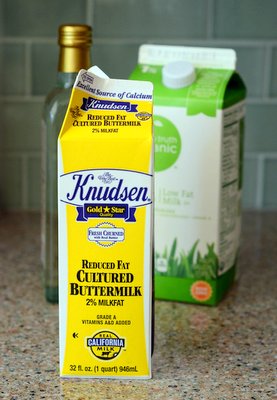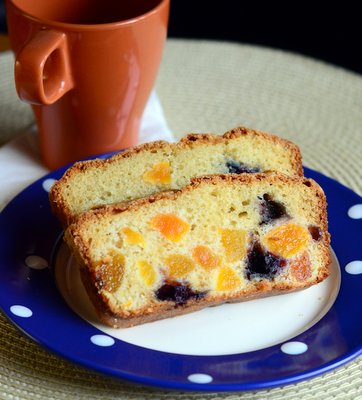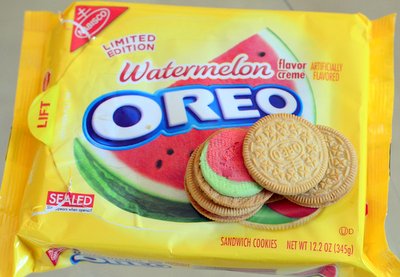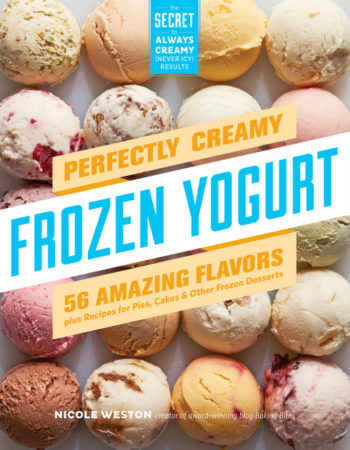
Buttermilk is an ingredient that I always keep in my refrigerator because I use it a lot for baking. It not only adds great flavor to baked goods, but it helps to tenderize cakes, muffins and other treats, too. Although I usually have it in stock, buttermilk is an ingredient that you might not always have on hand when you decided to do a little baking. Fortunately, there are a few easy ways to whip up a homemade substitute for buttermilk.
The first option, to substitute for 1 cup of buttermilk, is to mix 1 cup of regular milk plus 1 tbsp of lemon juice or vinegar and allow it to sit for about 1 minute. The lemon juice or vinegar makes the milk more acidic, like buttermilk, and also causes the milk to curdle slightly and thicken, like buttermilk (the fact that it has curdled will not negatively impact your baked goods in any way). I prefer to use vinegar unless I am making a dish that already has lemon flavor. I usually use either white vinegar or apple cider vinegar, both of which have relatively mild flavors. Â You can also use this recipe with nondairy milks, however they will not curdle and thicken in the same way that dairy milks will, though they will still work in a recipe.
The second option to substitute for buttermilk is to whisk together 1/2 cup of yogurt or sour cream with 1/2 cup of milk. If you only have Greek-style yogurt on hand, use 1/3 cup yogurt and 2/3 cup milk. This mixture may be slightly thicker than store bought buttermilk, but it has good acidity and a very similar flavor to buttermilk for baking.
Finally, if you also rarely have regular milk on hand, your best bet is to stock up on dried buttermilk powder, which can be reconstituted with water for use in a recipe. It has an exceptionally long shelf-life, so you don’t need to worry about running out as long as you keep it stored in an airtight container in a cool environment.






Sammy Smeth
May 29, 2014This is really helpful as in england we can’t get cartons like that, but rather it comes in tiny cups like single cream and suchlike products. It’s good to know I can substitute it with things I already have should it come to that.
S xo.
blinkeredbarbiebakes.blogspot.com
Andrea
May 29, 2014Where can I find powdered buttermilk? I tend to develop the urge to bake in spells and I think using regular buttermilk would wind up being wasteful for me.
Nicole
May 29, 2014Andrea – Most well-stocked grocery stores should carry it, but I’ve also seen a few brands available on Amazon.
Kim Vause
June 2, 2014This is so useful! Thanks for posting this 🙂
Fat Fudge
June 2, 2014“You can also use this recipe with nondairy milks, however they will not curdle and thicken in the same way that dairy milks will”
Not true. Soy milk does curdle and thicken.
Lesli
June 7, 2015Hi – I make kefir every day, which has a lovely tang to it. Have you ever tried subbing it for buttermilk? I haven’t tried it yet (it will lose all it’s lovely probiotic properties during baking) but am curious about it.
Krissy
February 9, 2016Thank you for your insight on buttermilk! I am interested in trying to make my own gluten free pancake mix but, like you mentioned, I am not often stocked with buttermilk. If I were to substitute the buttermilk of a recipe with powdered buttermilk, would I be able to pre-mix the dry ingredients including the dry buttermilk (and then add the appropriate amount of water to the mix to activate the dry buttermilk), or is it important to make the wet buttermilk separately and then add it to the wet mixture when I make the pancakes? Thanks in advance for your insight!
Nicole
February 9, 2016Krissy – Yes, that should work out just fine! Good luck!